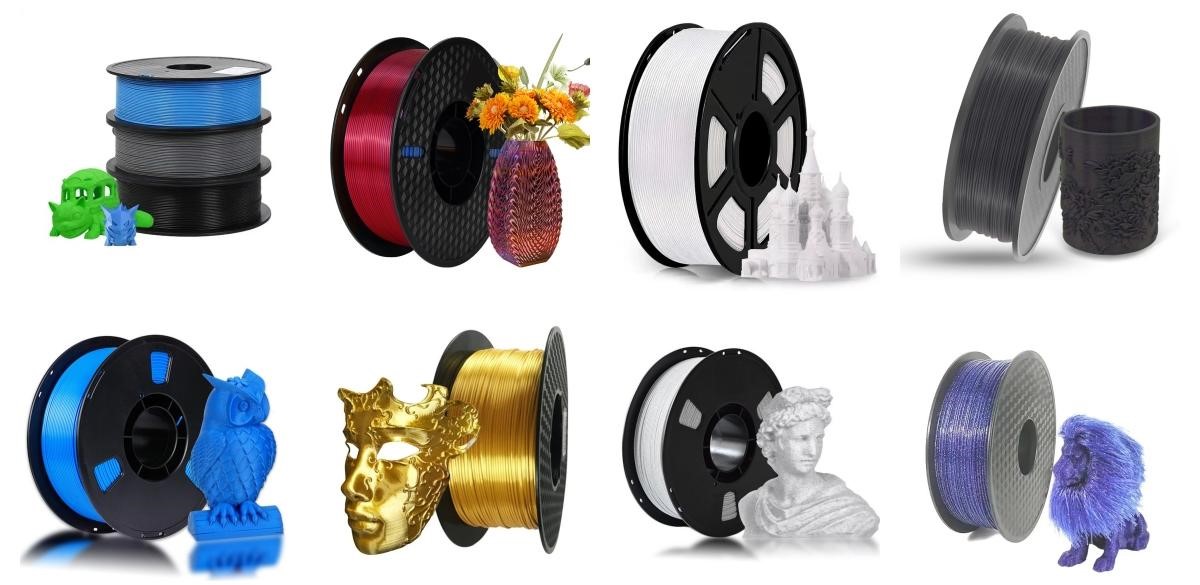Nano Dimension Reflects: “Into thin Air” – The present of the additive manufacturing industry is still “alive”… albeit the oxygen runs out
We are collectively at the beginning of the next phase of the additive manufacturing (AM) industry – moving into the thin air[1] of the fourth chapter. Before we go into what this may entail, we will outline its three proceeding stages.
Chapter 1 – Excited by Innovation “0-2-1”
To borrow a phrase from Peter Thiel, this was the “Zero to One” era of AM. From the mid-1980s to late-1990s, a cohort of entrepreneurs, predominately from academia (where the technology resided some 10 years earlier already), could be defined by how their combined high quality of technology acumen was only overwhelmed by their excitement, far-fetched visions (à la – “consumer will print cellular phones in their garages”), and lack of reliable business model sense and road maps thereof. This enthusiasm was almost exclusively not about what the technology could do, but far more often in what it could potentially do. There is no blame to be made for how this energy overtook us. This is normal for a nascent technology. For AM, there was almost an engineer’s version of romanticism at the idea that something the size of a box could build something else in 3 dimensions in front of our eyes. While 2D printers, print, there is something missing in their output as we, the reader of said document, must decipher words on the page into something meaningful (words into poems, or prose, or legal, or engineering drawings…etc.). But with 3D printing, alas, we have creation “of final products in front of our eyes” as those visionaries claimed, “Democratizing design & manufacturing”; no other interpretation required.

Chapter 2 – Do we need to have Return on Investment (ROI) as well?
This era from the late-90s until 2019 saw multiple attempts to translate the many tales of excitement from the first chapter into “real businesses.” For the most part, the people who led this stage were the “graduates” of the 0-2-1 phase, carrying a combination of competition’s arrows scars on their backs and knives cuts of investors and pundits on their proverbial chests. Yet they carried the upper hand in knowing the technology in-and-out and understanding the business challenges. Arguably, this strength was also a weakness in that they were still looking for the technology to lead the application, rather than the opposite. They were too focused on the intellectual property and engineering marvel, but not the manufacturing solutions that customers needed, made with the materials that actually fit.
The incumbent AM leaders innately thought of a technology solution to what they perceived to be a technology problem. So, the next step was either to further develop the existing machines around additional functionalities or acquiring other innovative solutions, so to speak. Tech was still around printing engineering, but not enough around materials and process. We should also add to this a missing software suite. Building business were manifested – not by striving for manufacturing economics but about acquiring additional printing capabilities.
The best examples of this are two of three leaders by revenue – each choosing a different route for growth – both erroneous in retrospective (albeit admittedly, retrospective is always 6:6 in quality…). One is sinking under a commitment to older technologies and only soft materials (polymers), and one is entangled with too many technologies without enough Go-To-Market synergies. Not to speak about both carrying financial and reputational liability resulting from dozens failed expensive acquisitions. It seems the dominant thinking was about more AM capabilities, as if a wider portfolio will create a stronger business. This is part of the solution, but not the solution; we’ll come back to it later.

Chapter 3 – Corona craze and “newbies and wannabes investors” love affair with memes
Corona was a challenge and unfortunately traumatic reality for all of us as business communities and societies. However, for industrial manufacturing, this period from 2020 until 2022 led to many developments that could not have been produced and emphasized in any other context. There was a combination of investor appetite and secular tailwinds that worked in perfect unison, re-enforcing each other.
The investor appetite for AM was driven by government stimulus in the form of salaries for people not working or working from home, low interest rates, and ample spare income or assets for older baby boomers and especially X-Y-Z generations, who were all newcomers to online no-fees-no-strings-attached stock trading. And to add to it all, Las Vegas was Corona-frozen…
The secular winds were either specifically Corona related or odes to growing narratives that had been echoing around in recent years. The realization that re-onshoring of manufacturing in the West and supply chain resiliency were needed urgently were the former, while sustainability and IP security were the latter. Either way, they were at the epicenter AM’s sweet spot, so claimed the AM veterans and pundits, while still missing the main two failures of this industry: unit economics and material fitness.
The third chapter was most evident in the “AM-SPAC craze.” We saw 5-6 notable companies go public via SPAC. Critics of SPACs in general would argue that these vehicles enable companies that should not otherwise be public to become public. When it comes to AM companies specifically, there’s enough evidence to suggest this argument is applicable. The performance of these companies on nearly any meaningful metric – i.e. sales projections and stock prices – since they have been public – is as underwhelming as their market ascension.

Chapter 4 – Industry disintegration/consolidation and expected, or at least hopefully leading to, rebuilding around business models and ROIs
The development of the AM industry as outlined above can be summarized as technological excitement to aspiring businesses to industry craze. The main aspect they have in common is the one thing that was missing from all of them – a sustainable business model.
We are still seeing this issue today over 35 years from the beginning of chapter one. So, its best that this is what chapter four should be about. The lack of a sustainable business model is the focus of the investors. This is especially the case in public markets where investors have shifted from the story and the potential to income statements and balance sheets. The focus on a sustainable ROI cannot be solved by trying to recreate the excitement of chapter one, nor the entrepreneur led attempts to build a business of chapter two, nor the stock market friendly stories of chapter three.
The AM industry will be defined by companies with technologies that provide solutions with consistently demonstrable better unit economics for low mix, high volume manufacturing problems, which must be delivered by an organization that by itself, can innovate, go-to-market and serve customers in a financially sustainable manner – with a gross margin of 60% or above. (subject to circumstance of product life cycle) and an EBITDA margin of at least 10%.
The long-term goal of replacing “high volume” legacy manufacturing technology with AM will need an order of magnitude more investments and time. Those will not happen if we do not reach a sustainable profitable industry now! Current players must prove there is ROI on present technologies, before continuing with dreamy visions of innovative grandeur.
The industry will get there via two routes – one for larger companies and one for smaller. For the first group – those above $100 million in revenue – there will have to be some consolidation as the financial profile of the bigger companies currently already suggests business sustainability is still not evident. For smaller companies – those from $10 million to $100 million in revenue – they must bring in financial discipline that has yet to be seen; and while it is unrealistic to expect positive EBITDA from all of this segment, all should be on a path to a positive EBITDA margin within 12-24 months from any given point in time; otherwise – the end is near.
With all that said, chapter four will be the most exciting. We collectively have technologies to solve real manufacturing problems, the financial framework and leadership to make our organizations excel, and, most importantly, the human capital to make the right decisions on all levels. When you have all the above – financial wherewithal comes in handy, as ‘dry powder’ is a financial term, not only material for AM machine…
In summary
Disintegration of the AM market and calls grow for a sustainable business model could only be muted for so long. Now we must really compel customers, not investors. Smaller companies, of which there are many, are repeating the mistakes of Chapter #1. The business models of AM must evolve in many ways, but it all starts with:
- The material and process riddle solved,
- Design software to lead all AM solutions, and
- Sufficient gross margins
If you’re not there, you’ll never foster the continued innovation necessary to succeed, and you’ll never get to a positive EBITDA and proper ROI.
[1] “Into Thin Air” – by Jon Krakauer
Yoav Stern, Chairman of the Board and Chief Executive Officer of Nano Dimension, will be participating at the upcoming Additive Manufacturing Strategies business summit in New York, February 6 to 8, 2024. Stern will be speaking on Panel 1: 3D-Printed Electronics: Emerging Markets and presenting the Keynote on Day 2.
Subscribe to Our Email Newsletter
Stay up-to-date on all the latest news from the 3D printing industry and receive information and offers from third party vendors.
You May Also Like
Further Understanding of 3D Printing Design at ADDITIV Design World
ADDITIV is back once again! This time, the virtual platform for additive manufacturing will be holding the first-ever edition of ADDITIV Design World on May 23rd from 9:00 AM –...
3D Printer Maker EVO-tech Reborn as NEVO3D — Once More With Feeling
EVO-tech was a 3D printing service and original equipment manufacturer established in 2013 and based in Schörfling am Attersee, Austria. The company produced high-quality material extrusion systems featuring linear bearings,...
3D Systems Brings 3D Printed PEEK Cranial Implant to the U.S. with FDA Clearance
For more than 10 years, 3D Systems (NYSE:DDD) has worked hand-in-hand with surgeons to plan over 150,000 patient-specific cases, and develop more than two million instruments and implants from its...
CDFAM Returns to Berlin for Second Annual Symposium
The second CDFAM Computational Design Symposium is scheduled for May 7-8, 2024, in Berlin, and will convene leading experts in computational design across all scales. Building upon the first event...































